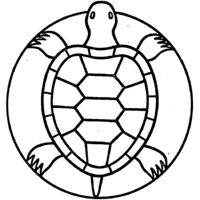Certina
Template:Hersteller-Menue2 Template:File
Certina is a Swiss watch manufacturer, currently part of the Swatch Group's Middle Range.
Kurth Frères and Grana

Adolphe Kurth was established as a watchmaker in Grenchen in 1888. The company was renamed Kurth Frères in 1894 as his brother Alfred Kurth (1865-1937) joined the firm. Even at this early point in its history the company specialized in watches for women from 10 to 14 lignes and exported their products internationally. These were mounted in steel, nickel, silver, or gold cases, some with decorations. The earliest trademark for Kurth was a shield with a star above it and the initials "KF" with the K reversed. It is said that Kurth's operation consisted of just three employees in a workshop connected to their home, as was typical for etablisseurs at the time.
By 1899 Kurth was selling watches using the brand name "Grana", a shortened form of "Granacus", the Latin name for Grenchen. This used a wreath of wheat as a logo. The Grana brand was so successful that the company would become known informally as Fabrique de Montres Grana for most of the early 20th century, though the company also used the name Granges Watch Co. and was officially still known as Kurth Frères. Grana was an early mass-market wristwatch brand, as these became popular with ladies and the company specialized in this market.
By 1913 the Kurth brothers were producing wristwatches, bracelet watches, leather straps, and ultra-thin watches under the Grana brand. They advertised their gold medals at Milan in 1906 and Brussels in 1910 as well. So-called bracelet watches were a major focus for Kurth during the war, with models for gentlemen and military use joining their ladies offerings. Their radium dial watches were especially prized in the war. Another name used by the company around 1920 was Narcisse, but the company officially abandoned this brand in 1921.
Kurth Ebauches
With demand for compact and shaped movements exploding after the war, Kurth established their Fabrique d'Ebauches et de Finissages and began offering complete movements and ebauches to other companies. They offered round movements in 7.75, 8.75, and 9.75 lignes and oval, tonneau, and rectangular movements from 5 to 10.5 lignes. A 1927 advertisement shows no less than 18 different shaped movements being offered.
Kurth was one of the dissident watchmakers that resisted the cartels created after 1923 to control production. The company was targeted by Ebauches SA for its movements and signed a partnership agreement in 1928 to abide by its export restrictions. This allowed Kurth to continue production through the 1930s and World War II, but it no longer offered its movements for sale to companies outside the cartel. Even so, Kurth signed on as a dissident ebauche maker that objected to the control of Ebauches SA.
Kurth would continue to produce its own movements for decades, and also supplied other makers within the Ebauches SA/ASUAG group. But the company did not try to break the control of the cartel like some others did.
Grana Becomes Certina
In 1929, Hans Kurth took over as commercial director and his brother Erwin Kurth as technical director. The pair would lead the company to grow into a major watch producer and would remain in charge for over four decades.
The new generation took charge just as the founders were no longer able to continue in management. Emile Kurth died on December 11, 1934, at the age of 65. Kurth Frères modified its management on April 16, 1935 to reflect his death. He was replaced by Frieda Kurth, with Erwin and Adolf Kurth remaining the administrators of record. Alfred Kurth died in February of 1937 at the age of 71. He had managed the company for 49 years. The company was reorganized after his death with a new contract signed on April 2, 1937. Hans Kurth, Adolf Kurth, and Erwin Kurth remained in management.
Kurth Frères had registered many brands to date, but in 1924 the firm registered the Certina name. It was not clear what the company intended to do with this brand, as they registered Irado, Estona, Tecna, and Fatima the same day, but it must have appealed to the Kurth brothers.
In 1938 the Grana watch factory celebrates the 50th anniversary with its 250 employees. Looking for a new brand name, the company chose "Certina", derived from the Latin "certus" (sure, surely). With this name, which is easy to pronounce in most languages, the image of the company is enhanced and the brand from now on expands even outside their home country. The company first registered the Certina brand on February 15, 1924, but does not appear to have used it until this time.
In 1941, Kurth clarified the company's position. Each of the four Kurth brothers focused on one area of the company: The mechanical workshop, the ebauche factory, the technical office, and the sales office. The company had also rationalized its movement production to focus only on four movements: 8.75, 10.5, 11.5, and 17 lignes. And these were offered in two brands: Grana for top-quality watches and Certina for more affordable products.
In 1948, at the 60th anniversary, the company has 350 employees and opens its first foreign branch in Germany.
The company changed its official name from Kurth Frères SA, Fabrique de Montres Certina to Certina, Kurth Frères SA in 1955, reflecting the ascendance and importance of this brand. The Grana name was no longer used after the early 1950s.
The DS concept

In 1959 Hans and Erwin Kurtz by Hans and Erwin Kurtz develop the groundbreaking concept of DS (Double Security), in which the movement is enclosed in a kind of highly stable vault. Watches with self-winding movement at that time usually resist a fall from 1.8 to to 2.2 meters. In the new model series Certina DS it is 6 meters, and at the same time the degree of water resistance is increased to 20 atmospheres (200 meters), bringing the watches to the forefront of the market.
In 1960 a Swiss expedition successfully completes the first ascent of the 8222 meter high Dhaulagiri in the Himalayas and is equipped with the Certina DS. The model "Blue Ribbon", equipped with a particularly flat self-winding movement, is launched in 1961. The name refers to the award of the Blue Ribbon (Blue Riband), which the liners Queen Mary, Normandie and United States have received as the fastest ships on the transatlantic route Europe-New York.
In 1971 the Certina Biostar is brought to market and is the world's first watch with a display of biorhythms.
In 1972 Certina is presented the "Diamonds International Award" and the "Golden Rose" as producer with the biggest innovative strength. At that time the company with 900 employees produces 375,000 watch components per day and consumes 53,000 jewels. The annual production amounts to 600,000 watches.
In 1979 the sale of the Certina DS, 20 years after its release, exceeds the million mark.
SMH and Swatch Group
Certina was a founding member of the General Watch Co. which was established on February 18, 1971. The holding company also included Eterna in Grenchen, Mido and Edox/Era in Bienne, Gunzinger Frères/Technos in Rosières, Oris in Hölstein, and Rado in Longeau. Although they retained their individual management, the companies increasingly cooperated in the 1970s.
In the year 1983 Certina joins the SMH group, consisting of a composite of ASUAG and SSIH. The group moved Certina out of Grenchen after nearly 100 years in July of 1984. It was first moved to Bienne before being moved to Le Locle alongside Tissot and Mido in 1995.
Today, after increasing by many other watch manufacturers, the group carries the name Swatch Group. Within this world's largest watch group Certina is positioned as a specialist in sports watches. The brand is now involved as a sports sponsor, for example in racing, and here especially at motorcycle championships and with the Formula 1 team of BMW Sauber.
Address
Certina Kurth Frères SA
Rue de Boujean 9
Case postale 3536
CH-2500 Biel 3
Tel. : 032 / 343 44 11
Fax : 032 / 343 44 00